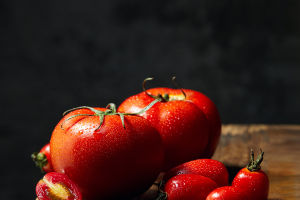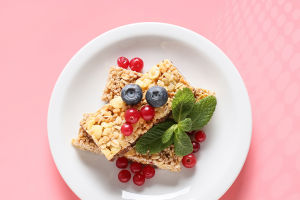The appearance of pineapple has a fish-scale-like skin, and the flesh is light yellow or white. The flesh of different varieties of pineapples varies in color, mostly yellow. The pineapple pulp is tender, crunchy, juicy, pleasantly fragrant, sweet and sour.
Not only is pineapple delicious, but it also has a variety of benefits.
1. Promote appetite
The attractive aroma of pineapple comes from the butyl acid in its ingredients, which has the effect of stimulating saliva secretion and promoting appetite.
2. Clean up the stomach
The proteolytic enzymes contained in pineapple can decompose protein and aid digestion. It is a very suitable fruit for modern people who eat too much meat and greasy food for a long time.
3. Beauty
Prevents dry and cracked skin, moisturizes hair, and at the same time can eliminate body tension and enhance the body's immunity.
We can refer to these contents when choosing fresh and delicious pineapples:
1. Appearance
The fresh and ripe pineapples are firm and full, with a yellowish tinge of cyan in the peel, no abrasion on the epidermis, and a fresh and fruity aroma. If you find that the leaves are easily broken or loose, it means it is overripe.
After cutting, the fruit is shallow and small, the interior is light yellow, the pulp is thick and the core is small. The pineapple is a high-quality product. Inferior pineapples have deep and many eyes, large internal tissue voids, thin pulp and thick core. The flesh of unripe pineapples is crisp and white.
2. Press
Gently press the pineapple with your hand, the hard and inelastic is the raw pineapple. Pretty solid and Microsoft's is mature. The pineapples that are too sunken or even sunken are overripe pineapples. If the juice overflows, it means that the fruit has deteriorated and can no longer be eaten.
3. Fragrance
Whether the pineapple is ripe can also be judged by the intensity and lightness of the aroma. A well-ripened pineapple can smell a little on the skin, but the flesh is full of aroma.
The fragrant and fragrant ones are overripe fruits, which do not last for a long time and are perishable. Those without aroma are mostly picked fruits with raw materials, which are obviously insufficient in sugar and tasteless to eat.
In fact, there is not just one variety of pineapple, but many different varieties, which vary in price and taste.
1. Caine
Caine, also known as Sarawak, is native to South America. It was named after the French expedition found it in the Caine region of Guyana. It is widely cultivated, accounting for about 80% of the world's pineapple cultivation area.
It is a tall plant with no thorns on the leaf margin or a few small thorns on the tip of the leaf. The fruit is large, and the average fruit size is 1100. Its pulp is light yellow, juicy, and moderately sweet and sour.
2. Queen class
Queen is the oldest cultivated variety of pineapples, and it has a cultivation history of more than 400 years. Its cultivation is medium in size, with shorter leaves than caine, with thorns on the leaf margins.
The weight of a single fruit is between 400-1500g, the flesh is yellow or dark yellow, the flesh is crisp and tender, the sugar content is high, the juice is juicy and sweet, and there is a strong fragrance, mainly for fresh food.
3. Spanish
Spanish varieties have larger plants, softer, yellow-green leaves with red thorns on the leaf margins, but also without thorns, medium-sized fruits, about the size of queens, small fruits large and flat, with a raised or depressed center. The pulp is orange-yellow, rich in flavor, and rich in fiber. It is generally used in canned food and fruit juices.


